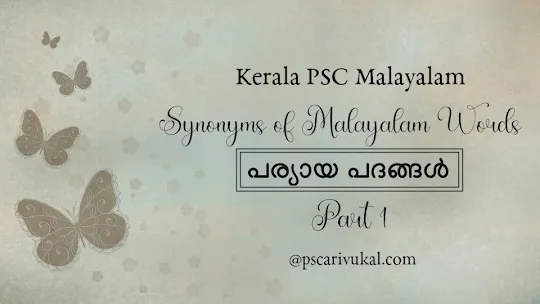The International Atomic Energy Agency (IAEA) is a vital international organization that plays a central role in promoting the peaceful use of nuclear energy while working to prevent its use for military purposes, including atomic weapons.
Established in 1957 as an autonomous body under the aegis of the United Nations, the IAEA is often called the 'nuclear watchdog' of the world.
It also serves as the world's central intergovernmental forum for scientific and technical cooperation in the nuclear field.
Questions related to the IAEA are relevant in the Science and Technology and Current Affairs section of the various Kerala PSC examinations.
Basic Facts
- Established on – July 29, 1957.
- Its statute was adopted on October 23, 1956, following U.S. President Dwight D. Eisenhower's 'Atoms for Peace' speech in 1953.
- Headquarters – Vienna, Austria.
- Participating Nations – 80.
- Newest Members of IAEA – Cook Islands, Somalia (joined in 2024)
- Motto – Atoms for Peace and Development.
- Affiliation – Autonomous body under the United Nations (reporting to both the UNGA and UNSC)
- IAEA Director General – Rafael Mariano Grossi.
- Aim – To promote the safe, secure, and peaceful uses of nuclear energy and to prevent its use for any military purpose, including nuclear weapons.
- Awards & Honors –
- Nobel Peace Prize (2005) (for their efforts to prevent nuclear energy from being used for military purposes and to ensure that nuclear energy for peaceful purposes is used in the safest possible way) jointly awarded with IAEA director, Mohamed ElBaradei.
Why in the News?
The IAEA frequently makes headlines due to its ongoing critical role in international nuclear affairs, particularly in regions of geopolitical tension.
In the wake of heightened military engagement between India and Pakistan during Operation Sindoor, there were social media speculations of Indian strikes hitting Pakistani nuclear facilities.
The IAEA swiftly confirmed in statements issued in May 2025 that there had been 'no radiation leak or release from any nuclear facility in Pakistan.'
This intervention by the IAEA was crucial in dispelling rumors and preventing further escalation of fears related to nuclear safety in a volatile region.
The IAEA also continues to closely monitor and report on Iran's nuclear program, with recent 2025 reports expressing serious concerns over Iran's escalating uranium enrichment levels and lack of full cooperation regarding safeguards issues.
It frequently reports on the implementation of the Joint Comprehensive Plan of Action (JCPOA) with Iran, or any deviations from it.
Structure & Working of IAEA
While not a direct UN body, the IAEA reports to the UN.
It serves as the verification agency under the Nuclear Non-Proliferation Treaty (NPT), though not under the Comprehensive Nuclear-Test-Ban Treaty (CTBT), which is not yet in force.
The IAEA conducts inspections only with the consent of the host nation or as agreed under international treaties.
Its policy-making bodies are the General Conference, comprising all Member States (meeting annually in September), and the 35-member Board of Governors.
The Director-General and six Deputy Director-Generals oversee the Agency's six principal divisions, supported by the Secretariat.
The 69th Regular Session of the IAEA General Conference will be held from September 15-19 in Vienna, Austria.
The IAEA also maintains two regional offices (Toronto, Tokyo) and two liaison offices (New York City, Geneva).
It runs specialized nuclear technology laboratories in Vienna, Seibersdorf, and Monaco.
In 2009, the Incident and Emergency Centre was established to coordinate international assistance for radiation incidents and emergencies.
Core Functions of IAEA
The IAEA operates on three core pillars:
- Safeguards & Verification: It conducts inspections and audits to verify that nuclear materials are not diverted for weapons, particularly under the NPT framework.
- Nuclear Safety and Security: It develops international safety standards, provides technical guidance, and plays a critical role in disaster prevention and response (e.g., post-Fukushima reforms).
- Technology Transfer & Development: It assists member states in applying nuclear science to various fields, including health (e.g., cancer treatment), agriculture (e.g., radiation-based food preservation), and water resource management.
India and the IAEA
- India has been a founding member of the IAEA since 1957.
- Following the Indo-US Civil Nuclear Agreement (2008), India signed an India-specific safeguards agreement with the IAEA.
- In 2014, India ratified the Additional Protocol (AP), granting the IAEA greater access to India’s civil nuclear program. India has signed an item-specific safeguards agreement with the IAEA, similar to Pakistan and Israel, which are nuclear-power states not members of the Nuclear Suppliers Group (NSG).
- India joined the IAEA Response and Assistance Network (RANET) in January 2020, a group of nations working to mitigate the effects of nuclear or radiological crises.
- The IAEA monitors India’s civilian nuclear facilities placed under safeguards, while military sites remain outside its purview due to India's non-signatory status to the NPT.
Thanks for reading!!!









Post a Comment
Post a Comment